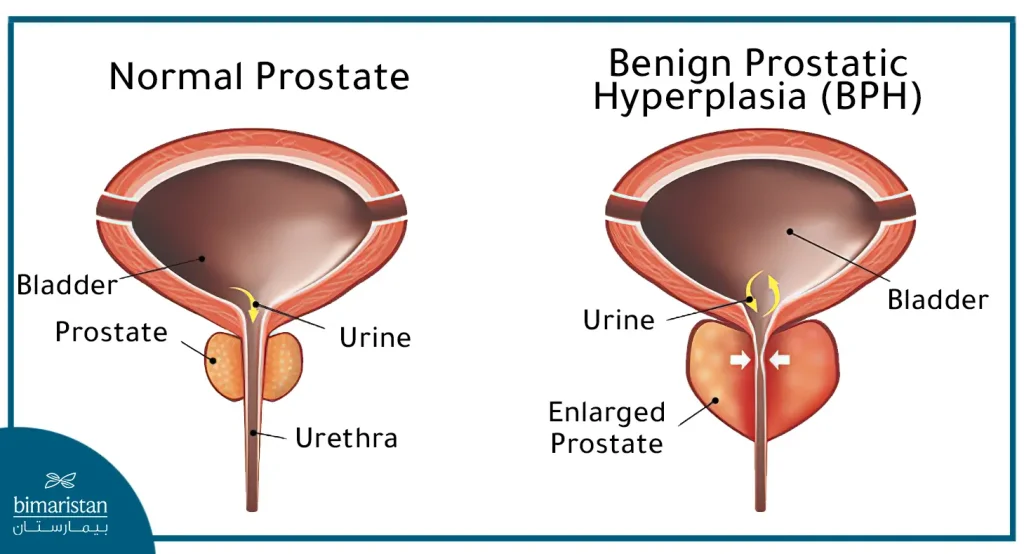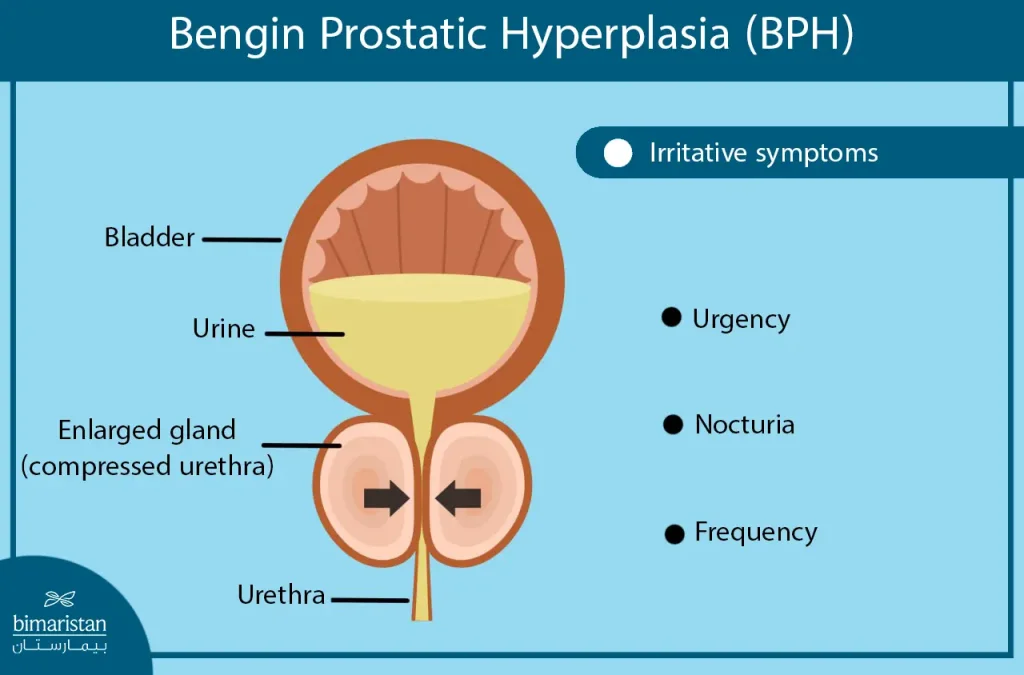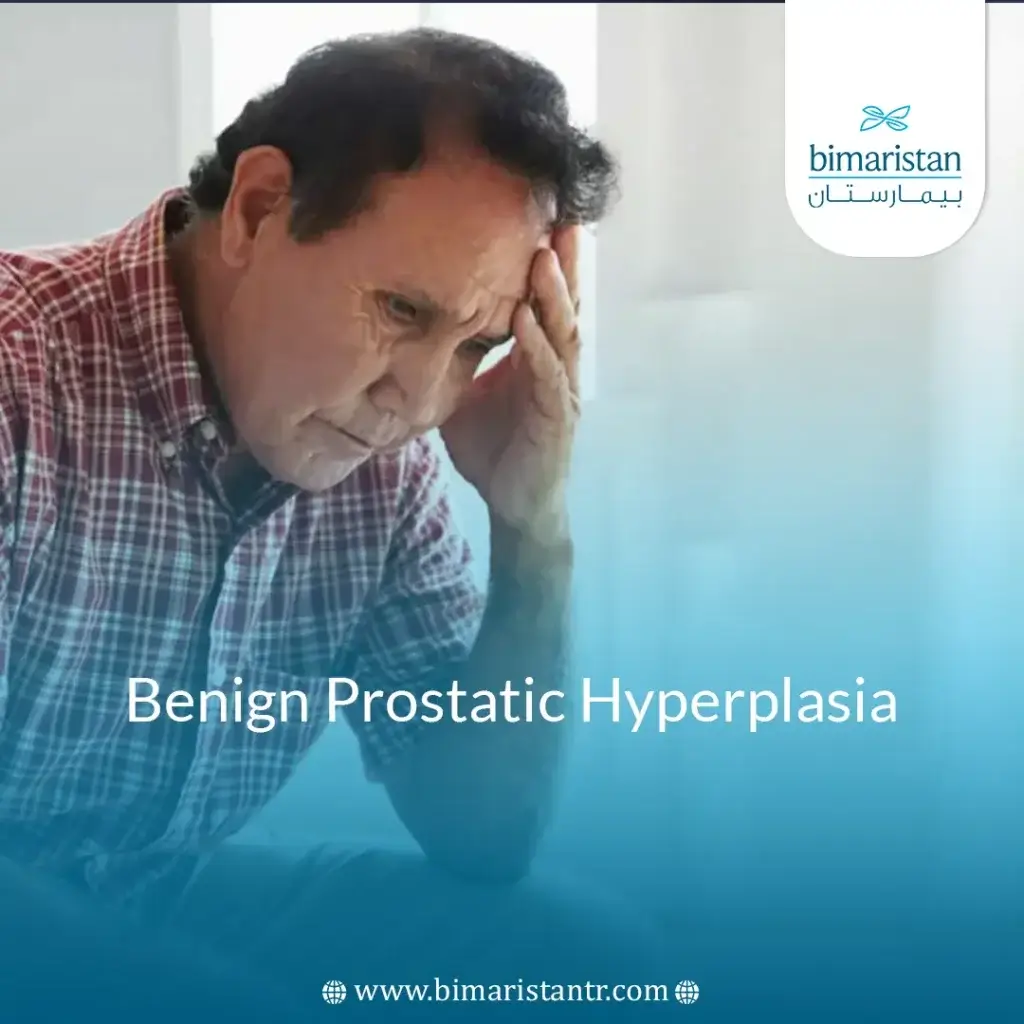Do you exp erience pain or difficulty while urinating? Learn about symptoms of benign prostatic hyperplasia and how to treat it.
As men age, more than half of them tend to experience prostate symptoms due to Benign Prostatic Hyperplasia (BPH). Fortunately, there are various methods available now for treating prostate enlargement.
In this article, we will discuss the causes and symptoms of benign prostatic hyperplasia, along with the diagnosis and treatment options available in Turkey.
What is benign prostatic hyperplasia (BPH)?
The prostate gland is situated just below the bladder and surrounds the urethra, serving as a urine passage. As the prostate grows in size, it adds pressure on the urethra, obstructing the usual flow of urine and leading to urinary problems, such as pain and a burning sensation during urination.
The prostate has several functions, such as aiding the movement of sperm during ejaculation, as well as regulating urine flow and production of hormones.
The prostate gland grows and enlarges as men age, undergoing accelerated growth in two stages. The first stage occurs during puberty when its size doubles, and the prostate continues to expand at a nearly constant rate until around the age of 25. After this age, there is another acceleration in natural growth. As men reach their fifth decade of life, there is a 50% likelihood of experiencing prostate symptoms.
It can be concluded that prostate enlargement is a common condition in most men as they age. However, the main problem should be the symptoms associated with it. As long as benign enlargement does not cause any discomforting symptoms that affect the patient’s quality of life, there is no need for treatment.
Several factors can lead to prostate enlargement in men, such as genetic factors, lifestyle habits, and levels of testosterone. These factors play a significant role in the mechanism and acceleration of the enlargement.
There are different treatment options available for prostate enlargement, which depend on the size of the gland and the patient’s preferences. These options can range from taking medication to removing the prostate through the urethra. Read more about treatment for (BPH) in Turkey.
Causes of Benign Prostatic Hyperplasia
As previously mentioned, certain lifestyle factors, such as smoking and age, can increase the probability of developing symptoms of benign prostatic hyperplasia (BPH). Other risk factors include:
- Obesity and lack of physical activity
- A diet rich in fats and low in fruits and vegetables
- Heart disease and diabetes
- Family history of early-onset (BPH)
- Hormone replacement therapy
Excessive caffeine consumption has been linked to prostate enlargement in men, as caffeine stimulates testosterone production that contributes to prostate enlargement.

Symptoms of Benign Prostatic Hyperplasia
Urinary symptoms resulting from prostate enlargement may include the following:
- Frequent urination (especially at night)
- Sudden urge to urinate
- Pain or burning sensation during urination
- Urinary incontinence
- Erectile dysfunction and ejaculation problems
Men may experience one or more symptoms based on the severity of prostate enlargement. Not all symptoms need to appear for a diagnosis.

Diagnosis of Benign Prostatic Hyperplasia
Patients experiencing symptoms can easily undergo various diagnostic tests to confirm the presence of benign prostatic hyperplasia. Some essential diagnostic methods include:
- Digital rectal examination
- Transrectal ultrasound
- Prostate-specific antigen (PSA) test
- Urine analysis
The tests are designed to diagnose and differentiate between benign prostatic hyperplasia and prostate cancer, which have similar early symptoms.
What are the treatment options for benign prostatic hyperplasia?
Medications may be used to treat mild stages of Benign Prostatic Hyperplasia. Surgical treatment, such as transurethral resection (TURP), may be necessary if drugs are ineffective or if the condition worsens.
The main goal of treatment is to relieve symptoms of benign prostatic hyperplasia. Fortunately, this can now be achieved through various methods, including non-surgical water vapor therapy, laser treatment of the prostate, and prostate catheterization. For more details on how to treat this problem, you can contact our medical team for a free consultation. We can guide you to the best centers and doctors in Turkey at the lowest possible cost, as the Turkish state has worked to provide the best minimally invasive surgical methods, including robotic surgery for treating prostate enlargement.
Complications of Prostate Enlargement in Men
If left untreated, benign prostatic hyperplasia can lead to complications, including the following:
- Recurrent urinary tract infections
- Prostatitis
- Bladder stones
- Bladder damage and inability to relax and contract properly
- Inflammation spreading to the kidneys
To avoid complications related to prostate enlargement, consult a specialist doctor when you notice urinary symptoms so that the problem can be treated early.
Can Benign Prostatic Hyperplasia be Prevented?
It is important to remember that preventing a problem is always better than finding a cure. This is also true for benign prostatic hyperplasia. Identifying the causes that can worsen this condition and taking measures to avoid them from a young age is essential. You can read more about the causes of prostate enlargement in young men to understand this issue better.
Healthy lifestyle habits such as avoiding smoking, engaging in physical activity, maintaining an average weight, reducing fat intake, and limiting coffee consumption prevent benign prostatic hyperplasia as men age.
Prostate enlargement is a common problem in men that can lead to uncomfortable symptoms, which is why many patients seek treatment. The treatment options available for prostate enlargement depend on the patient’s condition and the severity of the enlargement. Making healthy lifestyle changes, such as engaging in regular exercise and quitting smoking, can help prevent prostate enlargement.
Sources:
- Benign prostatic hyperplasia (BPH)
- Benign prostatic hyperplasia: Evaluation and medical management in primary care
